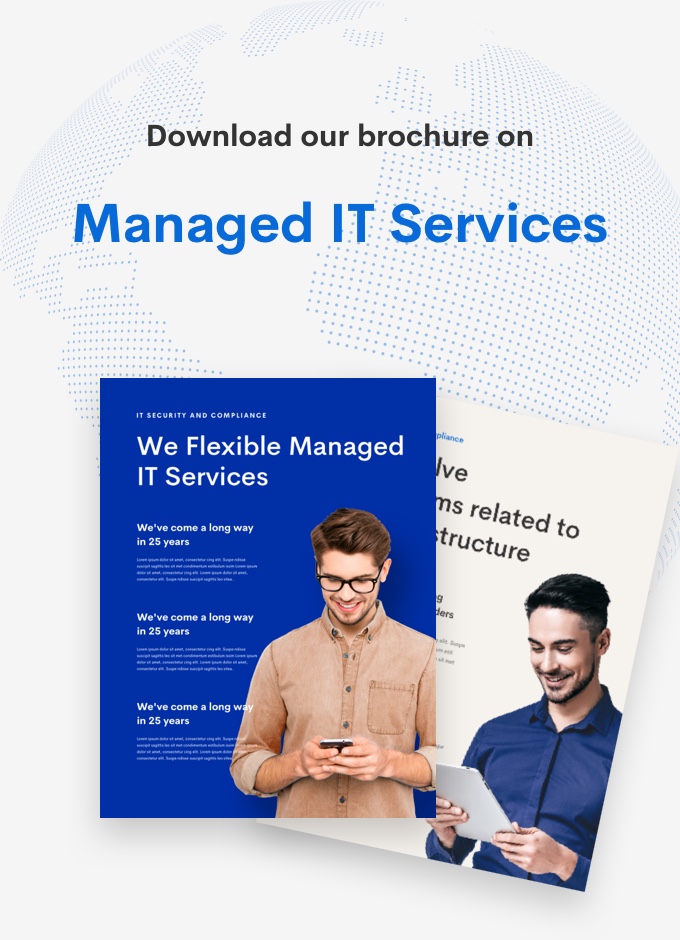Mastering On-Premise to Cloud Migration: A Comprehensive Guide

Mastering On-Premise to Cloud Migration: A Comprehensive Guide
As organizations strive to keep pace with the dynamic technological landscape, the advantages of migrating from on-premise infrastructure to the cloud are becoming increasingly apparent. Cloud computing provides scalability, flexibility, cost-efficiency, and a wide array of services, empowering businesses to stay competitive and agile. However, the journey to the cloud is intricate and demands meticulous planning and execution. This blog post will unravel the five indispensable steps for achieving a successful on-premise to cloud migration.
Embark on a transformative journey from on-premise to the cloud with meticulous planning and execution. Our comprehensive guide unveils the five essential steps, ensuring a seamless migration that enhances agility, reduces costs, and positions your organization for a competitive edge in the digital landscape. Let ITLOGIXS be your guide, turning the complexities of cloud migration into opportunities for innovation and growth.
1. Scrutinize Your Current Infrastructure
Before embarking on the cloud migration journey, it is imperative to have an in-depth understanding of your existing on-premise infrastructure. Conduct a thorough assessment to catalog all assets, encompassing servers, storage devices, networking equipment, and applications. Document dependencies and performance metrics to discern which components are suitable for migration and which require modernization or retirement.
Furthermore, delineate your organization’s specific goals and objectives for the migration. Whether it’s cost reduction, scalability improvement, enhanced security, or enabling remote work capabilities, a clear understanding of objectives will guide informed decision-making throughout the migration process.
2. Select the Right Cloud Provider and Services
One of the pivotal decisions in the migration process is selecting the most appropriate cloud provider. Each provider, be it Amazon Web Services, Microsoft Azure, or Google Cloud, offers a distinctive set of services and pricing models. Consider factors such as data center locations, compliance requirements, and the breadth of services each provider offers.
Once a cloud provider is chosen, align your organization’s needs with the available cloud services, including Infrastructure as a Service (IaaS), Platform as a Service (PaaS), and Software as a Service (SaaS). The decision hinges on whether you prefer managing the underlying infrastructure or leveraging fully managed services.
3. Strategize and Design Your Cloud Architecture
A meticulously designed cloud architecture is paramount for a seamless migration. Develop a comprehensive migration plan outlining the sequence of steps, timelines, and resource requirements. Take into account factors like data transfer methods, network connectivity, security, and disaster recovery.
To minimize disruptions, opt for a phased approach, migrating less critical workloads initially and gradually progressing to more mission-critical applications and data. Ensure that your cloud architecture adheres to best practices for scalability, redundancy, and security.
4. Execute Data Migration and Rigorous Testing
Given that data is the lifeblood of most organizations, a successful migration hinges on the effective transfer of data to the cloud. Identify appropriate data migration methods, whether offline data transfer, online data replication, or a combination of both. Ensure data integrity and consistency throughout the migration process.
Testing is equally critical. Develop a comprehensive testing plan to verify that applications and data perform as expected in the cloud environment. Conduct various tests, including functional, performance, security, and disaster recovery tests, to identify and address any issues before going live.
5. Continuous Monitoring, Optimization, and Training
Post-migration, the work is far from over. Continuous monitoring and optimization are essential to maintain a cost-effective, secure, and high-performing cloud environment. Implement cloud monitoring tools to track resource utilization, application performance, and security threats.
Regularly review cloud resources and adjust configurations based on usage patterns and cost optimization opportunities. Additionally, provide training for your IT staff to equip them with the necessary skills to effectively manage and operate the cloud environment.
In Conclusion
Migrating from on-premise to the cloud can significantly benefit your organization, but it demands careful planning and execution. By following these five essential steps — assessing your infrastructure, selecting the right cloud provider and services, planning your cloud architecture, executing data migration and testing, and continuously monitoring and optimizing your cloud environment — you can ensure a seamless transition. A well-executed cloud migration enhances agility, reduces costs, and positions your organization to gain a competitive edge in today’s digital landscape.
About ITLOGIXS Cloud Migration Services
Empowered by Azure technology, ITLOGIXS Cloud Migration Services offers a comprehensive solution that combines cloud knowledge and software-enabled automation. This solution enables enterprises to build a scalable and flexible infrastructure tailored to meet unique business requirements. Committed to continuous innovation, ITLOGIXS assists in maximizing cloud adoption benefits and achieving cloud migration goals. Schedule a meeting with our Experts, and let us guide you through this transformative journey.



